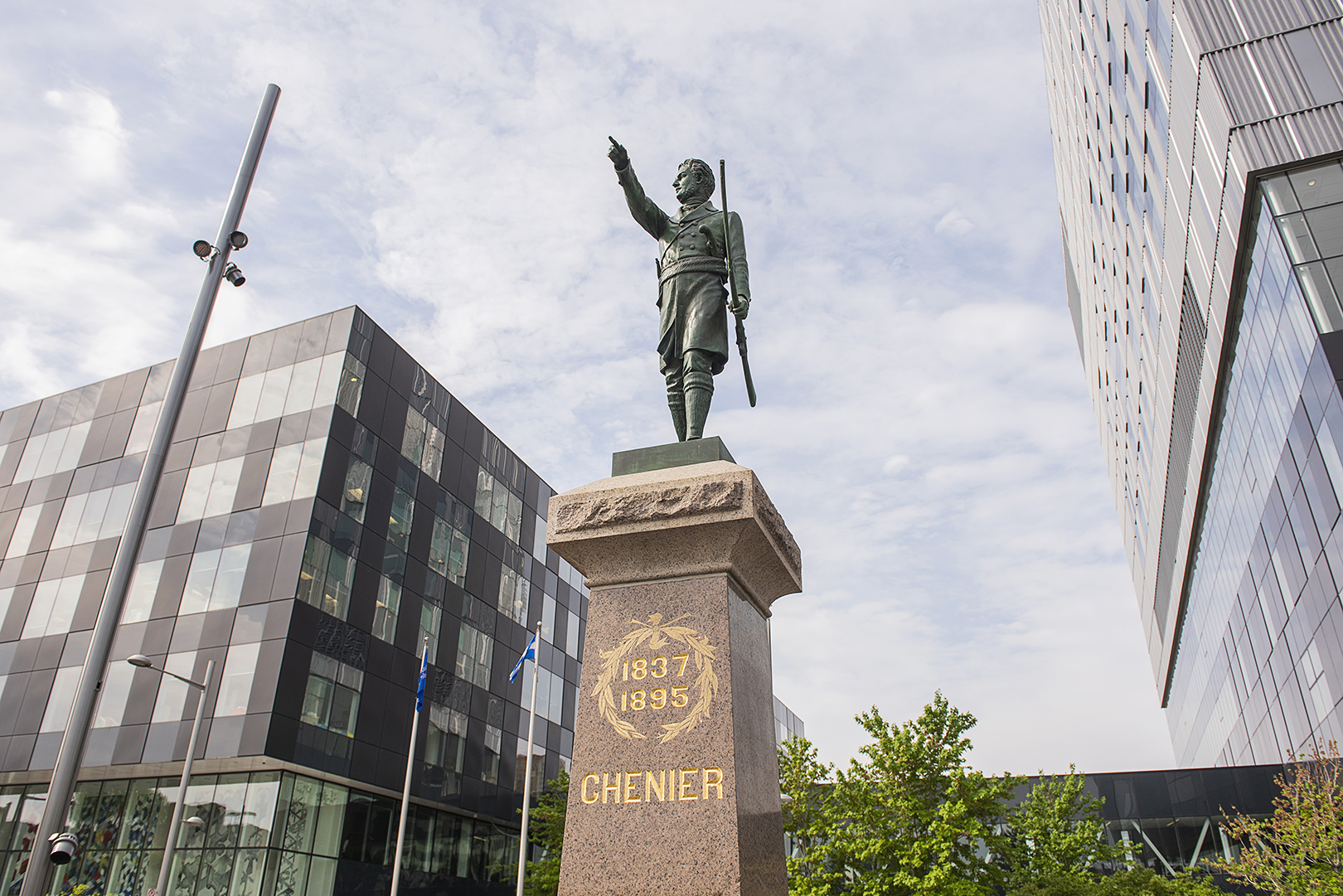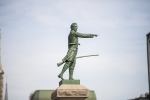Alfonso Pelzer
Monument à Jean-Olivier Chénier
1891
Presentation of the artwork
This monument in the likeness of Jean-Olivier Chénier plays an important historical role in memory of the Patriotes. It stands in Viger Square, bordered by Rue Saint-Denis and Rue Saint-Antoine.Dressed in a frock coat and wearing the Patriote arrowhead sash, armed with a musket and a pistol, his powder horn in a bandolier, the figure is moving forward, extending his arm into the distance, seeming to indicate the path to follow to the fighters behind him. The artwork is made of embossed copper leaves on a core of metal and stands on a pink-granite base. The objects replaced when the sculpture was restored are made of resin.
Associated events
The artwork was produced on the occasion of the celebrations for the 250th anniversary of the Ville de Montréal.
This was the first monument to Jean-Olivier Chénier. The Saint-Eustache physician, involved in the Patriote movement, was general in chief of the county of Deux-Montagnes. Whereas Louis-Joseph Papineau advocated moderation, Chénier made a call to arms, and subsequently a price was put on his head. In December 1837, he commanded some 200 men, entrenched mainly in the church, presbytery, and convent in Saint-Eustache, to fight the British army. His men were quickly defeated by the British troops, and this victory ended the 1837 uprising. Chénier was killed when he tried to leave the church, which was in flames, on 14 December 1837.
Alfonso Pelzer
German-born Alfonso Pelzer arrived in the United States in the early 1890s. He worked as a furnaceman for W. H. Mullins, in Salem, Ohio. Aside from Monument à Jean-Olivier Chénier, only one other artwork can be attributed to him: a statue of Abraham Lincoln in New Jersey. He returned to Germany, where he died in 1904.






